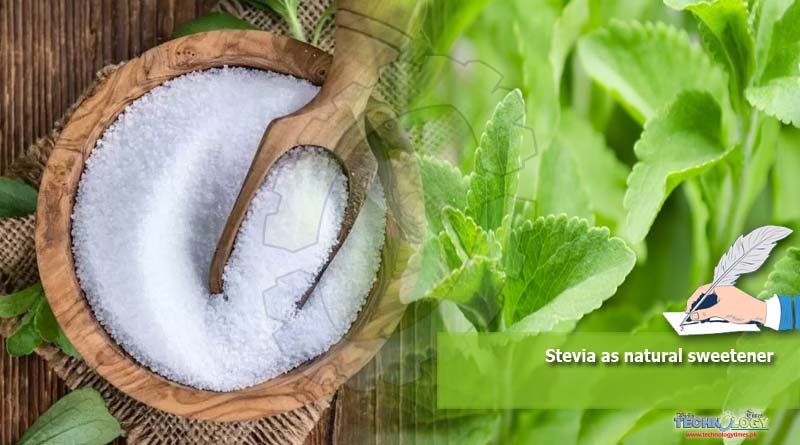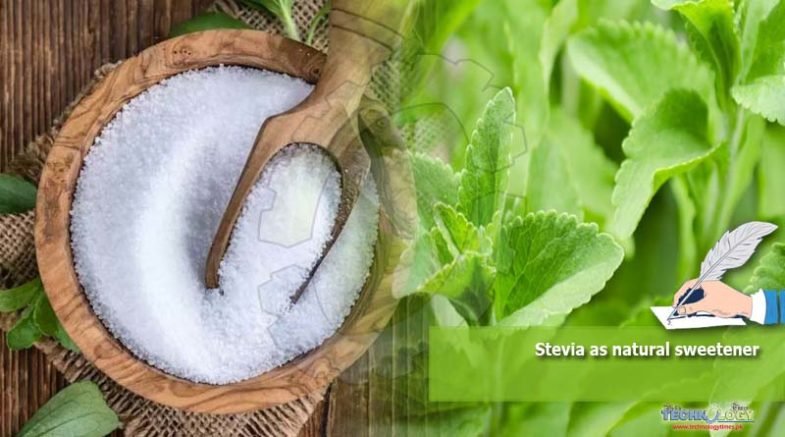Worldwide stevia is famous for its sweet leaves and zero calories. Naturally it is found in Paraguay and Brazil, but now it’s cultivation has been started worldwide.
 Botanical Characteristics:
Botanical Characteristics:
It is an annual plant and can grow up to 1 meter. Its leaves are 2-10 cm long and 10-15 times sweeter than cane. Its stevioside 200-300 times sweeter than sugar. Stevioside’s recovery from leaves ranges up to 10% while from stem and branches its concentration is lies between 2-3%. Stevia leaves are also used for medicinal purposes. Due to zero calories its leaves can be easily used by diabetes patients, it lowers the blood sugar level and blood pressure. It also contains antibacterial properties hence used in toothpastes. It has been found efficient to cure skin diseases.
As it is believed to be a rich source of calcium so it can be a wise choice to recede the malnutrition in women and as well as children. Also improves the digestibility system and ameliorate the immunity level against Rota virus.
Time and Method of Sowing:
Stevia is cultivated through nursery. Nursery can be raised through seeds, cuttings and tissue culture. Plants raised through seeds, cuttings and tissue culture can be transplanted in main field after two and one month, respectively. For spring sowing nursery can be raised till the end of January however for Rabi sowing nursery can be raised in May and June. The favorable temperature for raising nursery is 15-20 OC.
Methods of Nursery Raising:
There are following different methods to raise its nursery:
As seeds are very small in size and light in weight, 30-35 grams seeds are enough to raise the nursery for the area of 1 acre. After sowing of seeds, it is advised to apply the water in a sprinkler way and cover the seeds with plastic sheet hence helps the moisture to be conserved. Within 6-8 weeks nursery is ready for transplanting.
Through Cuttings:
For raising the nursery through cuttings, take stevia’s top 4-inch portion and plant it in plastic cups and sprinkle the water on it and when cuttings will sprout then transplant these seedlings into main field.
Through Tissue Culture:
If nursery is raised through tissue culture then prepare MS. Media (Murashige and Skoog medium (or MSO or MS0 (MS-zero)) is a plant growth medium used in the laboratories for cultivation of plant cell culture) and sterilize at 121 OC for 20 minutes. IBA and BAP use for stem and root growth respectively.
Land Preparation:
Light loam soil is recommended for its cultivation. Generally, 2-3 cultivations followed by planking are required to obtain good tilth. Within 30 days’ nursery is ready for transplanting.
Fertilizer and Irrigation Requirement:
Before transplanting add some farm yard manure, 1 bag of DAP, 2 bags of urea and 1 bag of potassium sulphate in one-acre field. Row to row distance 45cm and plant to plant distance 35cm and apply light irrigation after transplanting Afterwards, 1-2 irrigations should be applied per week. We can take its two cuttings in one year.
Insect/ Pest Attack:
Stevia plants are susceptible to be attacked by termites, jassid, aphid, thrips and american boll worm while root rot and wilting are some of the common diseases of stevia.
Harvesting:
It is usually advised to pluck out the leaves before flowering stage because initiation of flowering lead to decline in sugar content of leaves. Its dry leaves can be used in grounded form. 300 mg dry leaves of stevia (in one cup of tea) gives the same sweetness as sugar.

 Botanical Characteristics:
Botanical Characteristics: